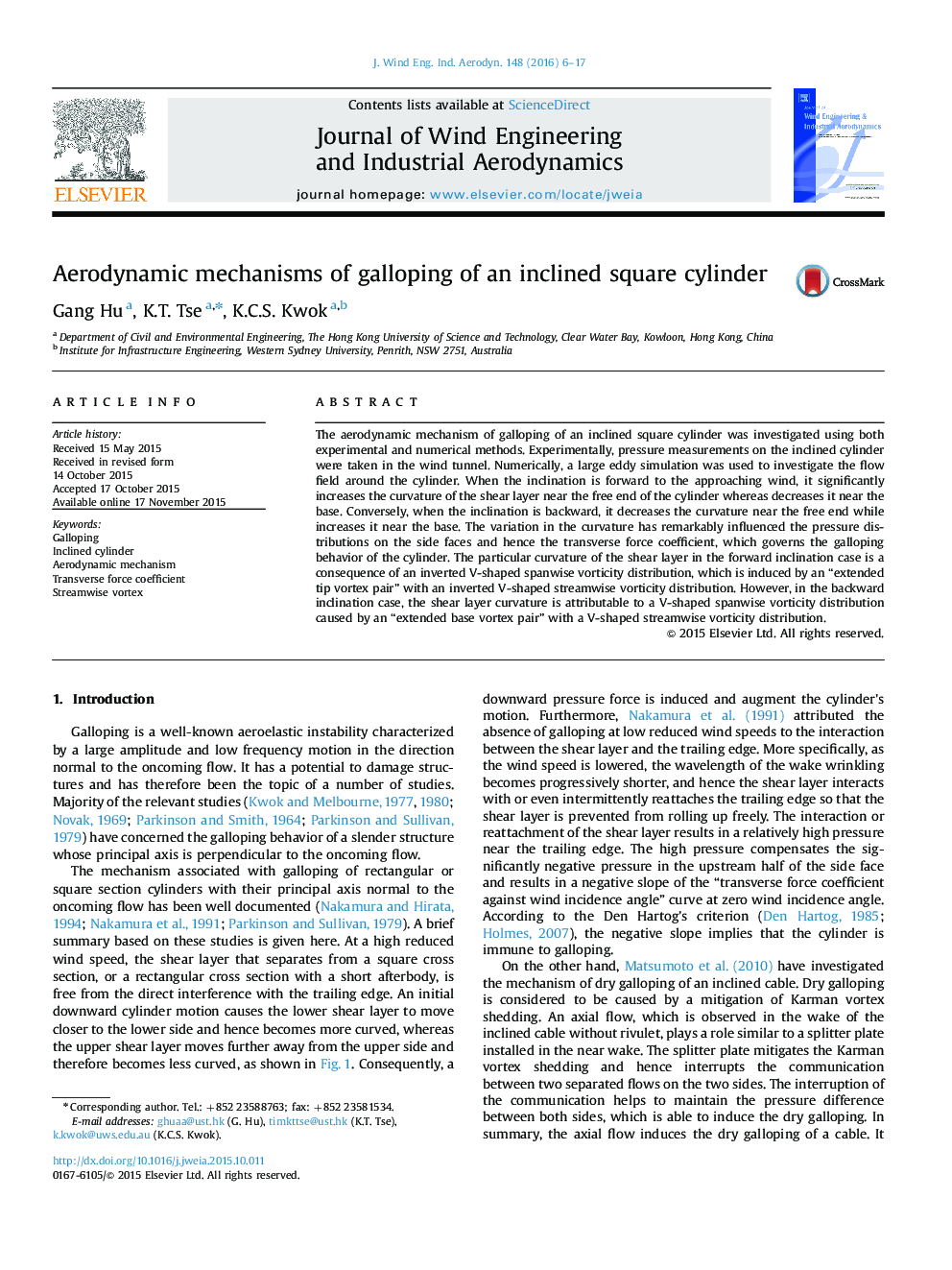| Article ID | Journal | Published Year | Pages | File Type |
|---|---|---|---|---|
| 293140 | Journal of Wind Engineering and Industrial Aerodynamics | 2016 | 12 Pages |
•Forward and backward inclinations remarkably influence the shear layer curvature.•Three types of shear layer and the associated pressure distributions are proposed.•Inverted V-shaped streamwise vorticity distribution induces a downward axial flow.•V-shaped streamwise vorticity distribution induces an upward axial flow.
The aerodynamic mechanism of galloping of an inclined square cylinder was investigated using both experimental and numerical methods. Experimentally, pressure measurements on the inclined cylinder were taken in the wind tunnel. Numerically, a large eddy simulation was used to investigate the flow field around the cylinder. When the inclination is forward to the approaching wind, it significantly increases the curvature of the shear layer near the free end of the cylinder whereas decreases it near the base. Conversely, when the inclination is backward, it decreases the curvature near the free end while increases it near the base. The variation in the curvature has remarkably influenced the pressure distributions on the side faces and hence the transverse force coefficient, which governs the galloping behavior of the cylinder. The particular curvature of the shear layer in the forward inclination case is a consequence of an inverted V-shaped spanwise vorticity distribution, which is induced by an “extended tip vortex pair” with an inverted V-shaped streamwise vorticity distribution. However, in the backward inclination case, the shear layer curvature is attributable to a V-shaped spanwise vorticity distribution caused by an “extended base vortex pair” with a V-shaped streamwise vorticity distribution.
